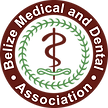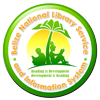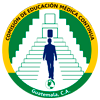Pain Neuroscience Education for Elementary School Students in Belize: An Exploratory Study
DOI:
https://doi.org/10.61997/bjm.v14i2.473Keywords:
Pain neuroscience education, Chronic pain, Global health, School students, BelizeAbstract
Introduction: Increasing school students’ knowledge and beliefs regarding pain yield positive behavior changes including decreased medication use and school absenteeism, as well as increased participation in physical activity. Objectives: To determine if a brief, one-time pain neuroscience education (PNE) lecture developed in the United States (US) to school students in Belize can yield similar positive shifts in pain knowledge and beliefs. Methods: One hundred and fourteen Belize elementary school students attended a 30-minute PNE lecture. Prior to and immediately following the lecture measurements regarding pain knowledge and pain beliefs were completed. Pain knowledge was measured using the revised Neurophysiology of Pain Questionnaire (rNPQ) and pain beliefs were measured using the adapted Health Care Provider’s Pain and Impairment Relationship Scale (HC-PAIRS). Results: Immediately following the lecture, overall pain knowledge improved significantly (p < 0.001) from 28.6% to 35.4%. Eight of the statements in the rNPQ shifted significantly following PNE. All pain beliefs shifted positive, with two reaching significance - “You can control how much pain you feel” (p = 0.02) and “Your brain decides if you feel pain, not your tissues” (p = 0.003). Conclusions: A one-time PNE lecture to elementary school students in Belize positively shifts pain knowledge and beliefs. The shift in pain knowledge, albeit significant, was less compared to previously US studies and with similar pre-PNE baseline scores indicate a need to further investigate and explore a PNE program specific to students in Belize to better match their ethnic and cultural needs.
Downloads
References
Nahin RL, Feinberg T, Kapos FP, Terman GW. Estimated Rates of Incident and Persistent Chronic Pain Among US Adults, 2019-2020. JAMA Netw Open. 2023; 6(5):e2313563. doi: 10.1001/jamanetworkopen.2023.13563 DOI: https://doi.org/10.1001/jamanetworkopen.2023.13563
Collaborators GBDLBP. Global, regional, and national burden of low back pain, 1990-2020, its attributable risk factors, and projections to 2050: a systematic analysis of the Global Burden of Disease Study 2021. Lancet Rheumatol. 2023; 5(6):e316-e329. doi: 10.1016/S2665-9913(23)00098-X DOI: https://doi.org/10.1016/S2665-9913(23)00098-X
Cross M, Smith E, Hoy D, Nolte S, Ackerman I, Fransen M, et al. The global burden of hip and knee osteoarthritis: estimates from the global burden of disease 2010 study. Meta-Analysis Research Support, Non-U.S. Gov't. Ann Rheum Dis. 2014; 73(7):1323-30. doi: 10.1136/annrheumdis-2013-204763 DOI: https://doi.org/10.1136/annrheumdis-2013-204763
Johannes CB, Le TK, Zhou X, Johnston JA, Dworkin RH. The prevalence of chronic pain in United States adults: results of an Internet-based survey. Research Support, Non-U.S. Gov't. J Pain. 2010; 11(11):1230-9. doi: 10.1016/j.jpain.2010.07.002 DOI: https://doi.org/10.1016/j.jpain.2010.07.002
Bekkering GE, Bala MM, Reid K, Kellen E, Harker J, Riemsma R, et al. Epidemiology of chronic pain and its treatment in The Netherlands. Research Support, Non-U.S. Gov't Review. Neth J Med. 2011; 69(3):141-53. Available from: https://pubmed.ncbi.nlm.nih.gov/21444943/
Association AM. Issue brief: Drug overdose epidemic worsened during COVID pandemic. 2021. June 1, 2021. Available from: https://www.ama-assn.org/system/files/issue-brief-national-snapshot-overdose-epidemic.pdf
Magel JS, Gordon AJ, Fritz JM, Kim J. The Influence of an Opioid Use Disorder on Initiating Physical Therapy for Low Back Pain: A Retrospective Cohort. J Addict Med. 2021; 15(3):226-232. doi: 10.1097/ADM.0000000000000751 DOI: https://doi.org/10.1097/ADM.0000000000000751
Hardcastle SJ, Chan DC, Caudwell KM, Sultan S, Cranwell J, Chatzisarantis NL, et al. Larger and More Prominent Graphic Health Warnings on Plain-Packaged Tobacco Products and Avoidant Responses in Current Smokers: a Qualitative Study. Int J Behav Med. 2015. doi: 10.1007/s12529-015-9487-x DOI: https://doi.org/10.1007/s12529-015-9487-x
Schoonheim-Klein M, Gresnigt C, van der Velden U. Influence of dental education in motivational interviewing on the efficacy of interventions for smoking cessation. Eur J Dent Educ. 2013; 17(1):e28-33. doi: 10.1111/j.1600-0579.2012.00755.x DOI: https://doi.org/10.1111/j.1600-0579.2012.00755.x
Schane RE, Prochaska JJ, Glantz SA. Counseling nondaily smokers about secondhand smoke as a cessation message: a pilot randomized trial. Randomized Controlled Trial Research Support, N.I.H., Extramural. Nicotine Tob Res. 2013; 15(2):334-42. doi: 10.1093/ntr/nts126 DOI: https://doi.org/10.1093/ntr/nts126
Hajek P, Stead LF, West R, Jarvis M, Hartmann-Boyce J, Lancaster T. Relapse prevention interventions for smoking cessation. Meta-Analysis Research Support, Non-U.S. Gov't Review. Cochrane Database Syst Rev. 2013; 8:CD003999. doi: 10.1002/14651858.CD003999.pub4 DOI: https://doi.org/10.1002/14651858.CD003999.pub4
Nagelhout GE, de Vries H, Boudreau C, Allwright S, McNeill A, van den Putte B, et al. Comparative impact of smoke-free legislation on smoking cessation in three European countries. Comparative Study Research Support, N.I.H., Extramural Research Support, Non-U.S. Gov't. Eur J Pub Health. 2012; 22 Suppl 1:4-9. doi: 10.1093/eurpub/ckr203 DOI: https://doi.org/10.1093/eurpub/ckr203
Parry J. Spread of SARS slows. BMJ. 2003; 326(7401):1232. doi: 10.1136/bmj.326.7401.1232 DOI: https://doi.org/10.1136/bmj.326.7401.1232
Lee AM, Wong JG, McAlonan GM, Cheung V, Cheung C, Sham PC, et al. Stress and psychological distress among SARS survivors 1 year after the outbreak. Can J Psychiatry. 2007; 52(4):233-40. doi: 10.1177/070674370705200405 DOI: https://doi.org/10.1177/070674370705200405
Buchbinder R, Jolley D. Effects of a media campaign on back beliefs is sustained 3 years after its cessation. Spine. 2005; 30(11):1323-30. doi: 00007632-200506010-00017 DOI: https://doi.org/10.1097/01.brs.0000164121.77862.4b
Burton AK, Waddell G, Tillotson KM, Summerton N. Information and advice to patients with back pain can have a positive effect. A randomized controlled trial of a novel educational booklet in primary care. Clinical Trial Randomized Controlled Trial. Spine. 1999; 24(23):2484-91. doi: 10.1097/00007632-199912010-00010 DOI: https://doi.org/10.1097/00007632-199912010-00010
Louw A, Podalak J, Zimney K, Schmidt S, Puentedura EJ. Can pain beliefs change in middle school students? A study of the effectiveness of pain neuroscience education. Physiother Theory Pract. 2018; 34(7):542-550. doi: 10.1080/09593985.2017.1423142 DOI: https://doi.org/10.1080/09593985.2017.1423142
Cooper R, Hypponen E, Berry D, Power C. Associations between parental and offspring adiposity up to midlife: the contribution of adult lifestyle factors in the 1958 British Birth Cohort Study. Research Support, Non-U.S. Gov't. Am J Clin Nutr. 2010; 92(4):946-53. doi: 10.3945/ajcn.2010.29477 DOI: https://doi.org/10.3945/ajcn.2010.29477
Nilsen TI, Holtermann A, Mork PJ. Physical exercise, body mass index, and risk of chronic pain in the low back and neck/shoulders: longitudinal data from the Nord-Trondelag Health Study. Am J Epidemiol. 2011; 174(3):267-73. doi: 10.1093/aje/kwr087 DOI: https://doi.org/10.1093/aje/kwr087
Louw A, Podolak J, Benz P, et al. A Randomized controlled trial of different single pain education sessions in middle school students: Immediate effects. Journal of the Physiotherapy Pain Association. 2019; Summer(47):14-24. Available from: https://www.ingentaconnect.com/content/ppa/pr;jsessionid=1u6gs65unk7p4.x-ic-live-03
Louw A, Louw C, Podolak J, Zimney K, DeLorenzo J, Maiers N, et al. Pain Neuroscience Education in Elementary and Middle Schools. Pediatr Phys Ther. 2023; 35(3):330-7. doi: 10.1097/PEP.0000000000001018. DOI: https://doi.org/10.1097/PEP.0000000000001018
Podolak J, Louw A, Benz P, Kruse A, Louw C, Zimney K. A Randomized Trial of Live versus Video Delivery of Pain Neuroscience Education for Middle School Children. Psychol Disord Res. 2019; 2(2):1-10. doi: 10.31487/j.PDR.2019.02.03 DOI: https://doi.org/10.31487/j.PDR.2019.02.03
Louw A, Landrus R, Podolak J, Benz P, DeLorenzo J, Davis C, et al. Behavior Change Following Pain Neuroscience Education in Middle Schools: A Public Health Trial. Int J Environ Res Public Health. 2020; 17(12):4505. doi: 10.3390/ijerph17124505 DOI: https://doi.org/10.3390/ijerph17124505
Reis F, Palermo TM, Acalantis L, Nogueira LC, Meziat-Filho N, Louw A, et al. "A journey to learn about pain": the development and validation of a comic book about pain neuroscience education for children. Braz J Phys Ther. 2021; 26(1):100348. doi: 10.1016/j.bjpt.2021.04.009 DOI: https://doi.org/10.1016/j.bjpt.2021.04.009
Garra G, Singer AJ, Domingo A, Thode HC, Jr. The Wong-Baker pain FACES scale measures pain, not fear. Pediatr Emerg Care. 2013; 29(1):17-20. doi: 10.1097/PEC.0b013e31827b2299 DOI: https://doi.org/10.1097/PEC.0b013e31827b2299
Moseley GL. Unravelling the barriers to reconceptualisation of the problem in chronic pain: the actual and perceived ability of patients and health professionals to understand the neurophysiology. J Pain. 2003; 4(4):184-9. doi: 10.1016/s1526-5900(03)00488-7 DOI: https://doi.org/10.1016/S1526-5900(03)00488-7
Catley MJ, O'Connell NE, Moseley GL. How good is the neurophysiology of pain questionnaire? A Rasch analysis of psychometric properties. Randomized Controlled Trial. J Pain. 2013;14(8):818-27. doi: 10.1016/j.jpain.2013.02.008 DOI: https://doi.org/10.1016/j.jpain.2013.02.008
Houben RMA, Vlaeyen JWS, Peters M, Ostelo RWJG, Wolters PMJC, Stomp-van den berg SGM. Health care providers' attitudes and beliefs towards common low back pain. Factor structure and psychometric properties of the HC-PAIRS. Clin J Pain. 2004; 20:37-44. doi: 10.1097/00002508-200401000-00008 DOI: https://doi.org/10.1097/00002508-200401000-00008
Fortier MA, Anderson CT, Kain ZN. Ethnicity matters in the assessment and treatment of children's pain. Review. Pediatrics. 2009; 124(1):378-80. doi: 10.1542/peds.2008-3332 DOI: https://doi.org/10.1542/peds.2008-3332
Bonham VL. Race, ethnicity, and pain treatment: striving to understand the causes and solutions to the disparities in pain treatment. Review. J Law Med Ethics. 2001; 29(1):52-68. doi: 10.1111/j.1748-720x.2001.tb00039.x DOI: https://doi.org/10.1111/j.1748-720X.2001.tb00039.x
Baskale H, Bahar Z. Outcomes of nutrition knowledge and healthy food choices in 5- to 6-year-old children who received a nutrition intervention based on Piaget's theory. J Spec Pediatr Nurs. 2011; 16(4):263-79. doi: 10.1111/j.1744-6155.2011.00300.x DOI: https://doi.org/10.1111/j.1744-6155.2011.00300.x
Marwaha S, Goswami M, Vashist B. Prevalence of Principles of Piaget's Theory Among 4-7-year-old Children and their Correlation with IQ. J Clin Diagn Res. 2017; 11(8):ZC111-ZC115. doi: 10.7860/JCDR/2017/28435.10513 DOI: https://doi.org/10.7860/JCDR/2017/28435.10513
Benedict TM, Nitz AJ, Gambrel MK, Louw A. Pain neuroscience education improves post-traumatic stress disorder, disability, and pain self-efficacy in veterans and service members with chronic low back pain: Preliminary results from a randomized controlled trial with 12-month follow-up. Mil Psychol. 2024; 36(4):376-92. doi: 10.1080/08995605.2023.2188046 DOI: https://doi.org/10.1080/08995605.2023.2188046
Chester R, Khondoker M, Shepstone L, Lewis JS, Jerosch-Herold C. Self-efficacy and risk of persistent shoulder pain: results of a Classification and Regression Tree (CART) analysis. Br J Sports Med. 2019; 53(13):825-34. doi: 10.1136/bjsports-2018-099450 DOI: https://doi.org/10.1136/bjsports-2018-099450
Vlaeyen JW, Crombez G, Linton SJ. The fear-avoidance model of pain. Pain. 2016; 157(8):1588-9. doi: 10.1097/j.pain.0000000000000574 DOI: https://doi.org/10.1097/j.pain.0000000000000574
Rasmussen HN, Scheier MF, Greenhouse JB. Optimism and physical health: a meta-analytic review. Ann Behav Med. 2009; 37(3):239-56. doi: 10.1007/s12160-009-9111-x DOI: https://doi.org/10.1007/s12160-009-9111-x
Zimney K, Van Bogaert W, Louw A. The Biology of Chronic Pain and Its Implications for Pain Neuroscience Education: State of the Art. J Clin Med. 2023; 12(13):4199. doi: 10.3390/jcm12134199 DOI: https://doi.org/10.3390/jcm12134199
Nijs J, Roussel N, Paul van Wilgen C, Koke A, Smeets R. Thinking beyond muscles and joints: therapists' and patients' attitudes and beliefs regarding chronic musculoskeletal pain are key to applying effective treatment. Man Ther. 2013; 18(2):96-102. doi: 10.1016/j.math.2012.11.001 DOI: https://doi.org/10.1016/j.math.2012.11.001
Louw A, Riera-Gilley V. Pain Neuroscience Education: Teaching People About Pain. J Pain Palliat Care Pharmacother. 2024; 38(3):292-301. doi: 10.1080/15360288.2024.2424853 DOI: https://doi.org/10.1080/15360288.2024.2424853
Downloads
Published
How to Cite
Issue
Section
License
Copyright (c) 2025 Adriaan Louw, Jennifer Doster, Dylcia Link, Claire Otto, Ally Wade, Jay Dahlke, Jessica Rosenau, Tori Salaba, Mel Castillo, Calli Carson, Jeff Hartman

This work is licensed under a Creative Commons Attribution-NonCommercial 4.0 International License.
BJM protects Copyright at all times. However, it gives up part of the rights by displaying a Creative Commons License 4.0 (cc-by-nc), which allows the use of the work to share (copy and redistribute the material in any support or format) and adapt (transform and built from the material) as long as exclusive mention of the publication in the journal as the primary source is made. Under no circumstances, the work can be commercialized.













